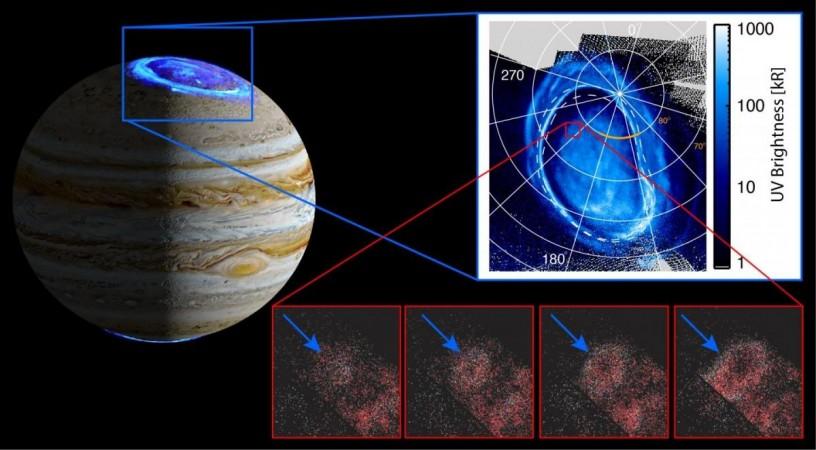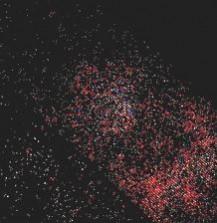The SwRI-led Ultraviolet Spectrograph (UVS) orbiting Jupiter aboard NASA's Juno spacecraft has detected new faint aurora features with ring-like emissions rapidly expanding over time. Scientists believe that charged particles coming from the edge of Jupiter's massive magnetosphere triggered these auroral emissions.
Just the way Earth, Jupiter too has magnetic fields that provide protection from the solar wind. The stronger the magnetic field, the larger the magnetosphere. Jupiter's magnetic field is 20,000 times stronger than Earth. Jupiter's magnetosphere is so large that it begins to deflect the solar wind 2-4 million miles before it reaches Jupiter.

"We think these newly discovered faint ultraviolet features originate millions of miles away from Jupiter, near the Jovian magnetosphere's boundary with the solar wind," said Dr. Vincent Hue, lead author of a paper accepted by the Journal of Geophysical Research: Space Physics. "The solar wind is a supersonic stream of charged particles emitted by the Sun. When they reach Jupiter, they interact with its magnetosphere in a way that is still not well understood."
Jupiter's magnetosphere
Thomas Greathouse, a co-author on the study explained:"Jupiter's magnetospheric dynamics, the motion of charged particles within its magnetosphere, is largely controlled by Jupiter's 10-hour rotation, the fastest in the solar system. The solar wind's role is still debated."

One of the goals of the Juno mission, recently approved by NASA for an extension until 2025, is to explore Jupiter's magnetosphere by measuring its auroras with the UVS instrument. Several times, UVS has detected a faint type of aurora, characterized by rings of emissions expanding rapidly with time.
These phenomena occur when there are shear velocities, such as at the interface between two fluids moving at different speeds. Another potential reason to produce the rings are dayside magnetic reconnection events, where oppositely directed Jovian and interplanetary magnetic fields converge, rearrange and reconnect, said scientists.
Both of these processes are thought to generate particle beams that could travel along the Jovian magnetic field lines, to eventually precipitate and trigger the ring auroras on Jupiter.
"Although this study does not conclude what processes produce these features, the Juno extended mission will allow us to capture and study more of these faint transient events," Hue said.














